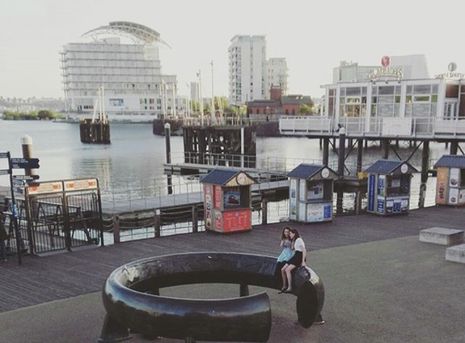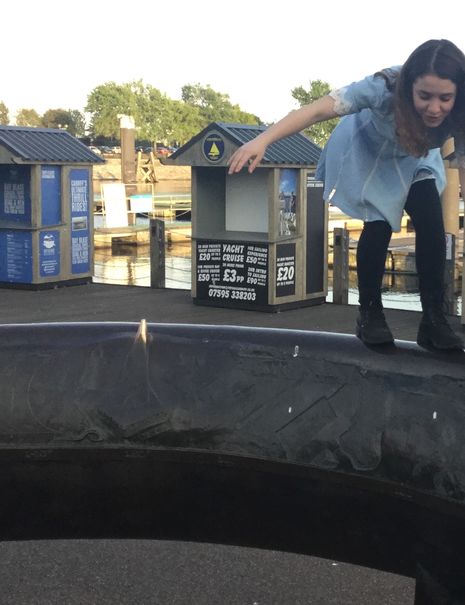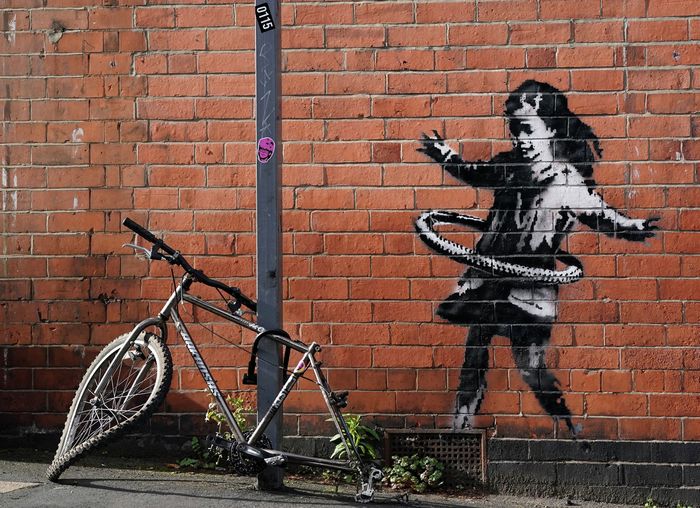Everyday Artefacts
Arts Editor Famke Veenstra-Ashmore considers her own experience with public art, inspired by Mark Bonnar’s recent documentary ‘Meet You at the Hippos’

Mark Bonnar’s BBC documentary ’Meet You at the Hippos’ is an amusing take on the format. The Scottish actor revisits the New Towns of his childhood, incorporating history with satire to craft a genuinely entertaining yet informative approach to something that usually flies under the radar: public art installations. I had never seriously thought about the purpose of public art though, beyond the commemorative or moral-raising intentions behind statues – for example. Retracing his father’s involvement in the development of these New Towns, Bonnar demonstrates how something as seemingly out-of-place with its surroundings (namely, those concrete hippos) can become so ingrained into our lives – and how deeply impactful they can be on a place’s identity.
“Public art is tactile, lending itself so well to curiosity from all ages and generations”
Though New Town Art was certainly a product of its time, with developers employing resident artists to cultivate the cultural identity and markings of these new towns, it raises questions, to me, about public art in general. Public art is tactile, lending itself so well to curiosity from all ages and generations. It didn’t take me long to reflect on local examples of public art – those everyday artefacts – which decorated my own area. The documentary reminded me of a particular friend’s birthday one year where while waiting for a lift, we messed around in the plaza of Cardiff Bay, our local town. In the same vein that New Towns were a product of the 1970s, Cardiff Bay is a product of the early 2000s, highly developed and gentrified following its exporting, port history. Alongside massive commercial and tourist developments came the introduction of a variety of artistic landmarks, including The Celtic Ring which you see in the header of this article.
BBC #Scotland’s documentary ‘Meet You at the Hippos’ sees actor Mark Bonnar revisit the #concrete sculptures made by his artist father Stan in the 1970s, including these hippos at #Glenrothes.https://t.co/O3gYkTeIz2 pic.twitter.com/kGZN3OoePI
- Concrete Society Lib (@concretelibrary) December 2, 2021
Sculpted by Harvey Hood in 1993, the bronze sculpture is massive, inspired by Wales’ Celtic origins, and on the inside engraved with various landmarks which you can view by looking beyond the sculpture in the direction indicated. Its purpose, then, is not only to provide cultural commemoration, but moreover it is deliberately interactive, directive – an artistic compass of sorts. Yet as children, our first impulse was not to admire the work’s artistic integrity but to climb all over it. From what I remember, its concave shape and difficult dimensions made it exceptionally difficult to climb; part of the joy of it was the physical struggle to get on top, the other part to remain there. Standing was a perilous risk. The engravings on the inside served as our stepping stones for getting to the top, not as reminders of the other instances of public art within the Bay.

Thinking about this day, four years later, I wonder – were we disrespecting the artwork by climbing all over it? Museums are always extremely strict in their rules about the handling of fine art and sculptures. How do we answer this question when thinking about public art which has no do not touch sign, which has no stringed fence around it, which can be weathered by both the elements and the people who interact with it? How do we preserve this kind of art? In Bonnar’s documentary, the hippos and elephants are revisited. As concrete sculptures, they have maintained their overall structure and appearance over the decades, but parts have been broken by repeated interactions – the trunks of the East Kilbride elephants, for example, having been snapped clean off. Other iterations of public art have been removed by councils and other authority bodies.
It’s clear how much New Town art means to Bonnar’s father, and the playfulness at which the pair reflect on its development and place in their own lives shows us how while we may not notice it initially, these public installations stay with us forever. They exist, of course, in their physical form but, through memory, they are transformed into another form of art: an internalised form of their purpose and intentions, and individualised experience that reminds us of where we have been. As long as sculptures remain accessible and interactive, this love affair between the public and public art can be maintained. Bonnar’s documentary is part of this preservation, so was the act of me going through those old photos and remembering the fondness I had with the Celtic Ring. There are always going to be more famous public art installations that we will collectively remember the importance of, but sometimes it is those local, everyday artefacts which mean more to us.
You can watch Mark Bonnar’s documentary ‘Meet You at the Hippos’ on BBC iPlayer now: https://www.bbc.co.uk/iplayer/episode/m00124rq/meet-you-at-the-hippos
Read David Harding’s ideas about ‘Public Art in the British New Towns’ here: https://www.davidharding.net/?page_id=13
 News / Caius mourns its tree-mendous loss23 December 2025
News / Caius mourns its tree-mendous loss23 December 2025 Comment / Yes, I’m brown – but I have more important things to say22 December 2025
Comment / Yes, I’m brown – but I have more important things to say22 December 2025 News / Cambridge welcomes UK rejoining the Erasmus scheme20 December 2025
News / Cambridge welcomes UK rejoining the Erasmus scheme20 December 2025 News / CUP announces funding scheme for under-represented academics19 December 2025
News / CUP announces funding scheme for under-represented academics19 December 2025 Interviews / Politics, your own way: Tilly Middlehurst on speaking out21 December 2025
Interviews / Politics, your own way: Tilly Middlehurst on speaking out21 December 2025











